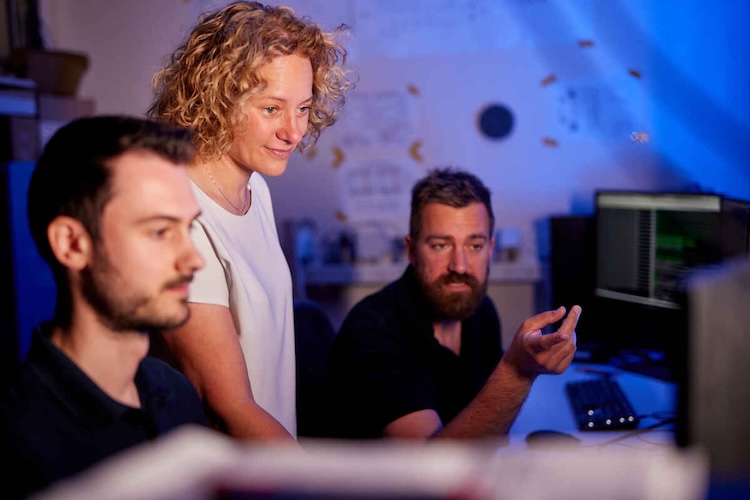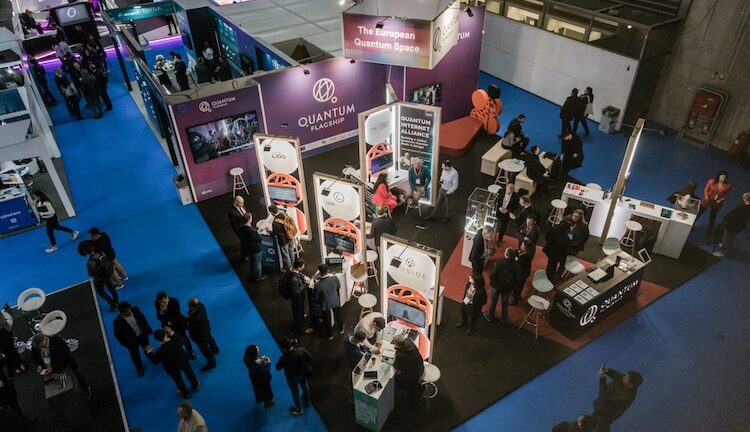The Next Internet Won’t Be American or Chinese
By Ramesh Jaura
This article was first published on https://rjaura.substack.com
BERLIN | 3 October 2025 (IDN) — Europe is placing its bet on quantum networking—linking machines through entangled particles—as the foundation for a new era of secure communications and distributed computing. And it’s determined to lead, as the 2025 Körber European Science Prize, a €1 million award to Stephanie Wehner, a German-born physicist and computer scientist at Delft University of Technology in the Netherlands, signals. The prize is an initiative of the Hamburg-based Körber Foundation dedicated to promoting dialogue and innovation in fields that shape the future of society.
“My goal is to make the ultimate form of communication allowed by nature—quantum communication—available to all,” says Wehner, who heads the European Quantum Internet Alliance, a 42-member consortium working on a first-of-its-kind prototype to connect two urban quantum networks, stretching across hundreds of kilometres by 2030.
Her group’s standout contribution so far is QNodeOS, an operating system that enables engineers to program quantum networks without needing to master the underlying physics complexities. In a field marked by hardware breakthroughs, QNodeOS addresses a vital component: the software layer that transforms lab prototypes into usable infrastructure.
In a year that the UN has designated as the International Year of Quantum Science, Europe’s decision to spotlight a systems builder is telling. This is no longer just about making better qubits—it’s about scale, standards, and interoperability, the ingredients of a functioning internet, not just a powerful machine.
The Körber Prize lands at a moment of acceleration. China has long demonstrated satellite-based quantum key distribution (QKD); U.S. labs are knitting together regional testbeds; Japan and others are experimenting with space-to-ground connections. Quantum Flagship has committed billions over the past decade to advancing quantum research. In that context, Wehner’s award is both a recognition and a message: Europe intends to convert physics into networking—and on its own terms.

That effort centres on three key stakes:
- Security: Quantum links offer cryptographic protections that detect any attempt to eavesdrop at the physical layer.
- Scientific utility: Entanglement can synchronise clocks, sensors, and telescopes across massive distances.
- Economic leverage: The region that standardises the tech stack—repeaters, devices, software, protocols—sets the rules and sells the tools.
What’s Special About This “Internet”
Today’s internet moves bits—0s and 1s—through voltage levels or pulses of light. A quantum internet, on the other hand, distributes qubits, which can be in a state of 0 and 1 at the same time (superposition) and, more importantly, be entangled. Entangled qubits have outcomes that are mysteriously connected—even across vast distances. If someone tries to intercept them, it will be detected in the data. That’s how quantum key distribution works, but security is just the beginning.
A true quantum network would be able to create, store, and exchange entanglement between distant nodes—some equipped with small quantum processors—and make that ability available to applications. Link enough high-quality entanglement together, and you can sync clocks with picosecond precision, combine telescopes into Earth-sized observatories, or patch together niche quantum computers into a more powerful whole. It doesn’t replace the classical internet—it enhances it in ways traditional tech never could.
Of course, the obstacles aren’t just physical—they’re systemic. Quantum states are fragile. Photons disappear. Repeaters that can maintain and extend entanglement are still under development. Even if the physics checks out, the system still requires schedulers, APIs, and programming models that hide complexity while unleashing the technology’s full power. That’s where Wehner’s work comes in.
The Software Pivot: QNodeOS
QNodeOS is pitched as the first operating system for quantum networks—and that comparison is deliberate. The early success of the classical internet came not just from hardware, but from standardised software like TCP/IP and interfaces that made it easy for developers to connect without needing to know every technical detail. QNodeOS targets the same layer for”entanglement as a service.”
In practice, that means:
- Defining API-like commands(e.g., request-entanglement, store-entanglement, swap-entanglement) instead of lab procedures.
- Scheduling scarce quantum resources, since a single node or fibre might have to juggle multiple users.
- Integrating diverse hardware—ion traps in one location, superconducting qubits in another, various quantum memory types—under a shared software standard.
- Planning for delay and uncertainty, since entanglement isn’t guaranteed to succeed every time.
This isn’t a polished consumer product. It’s a backbone for making pilots repeatable, not one-off demos. For Europe, it’s also a foundation for standardisation—the sort of scaffolding that researchers, companies, and policymakers can rally around.
From Laboratories to Intercity Links
The Quantum Internet Alliance is taking a phased approach. First come city-level testbeds, where universities and telecom providers run QKD and distribute entanglement over existing fibre networks. The next challenge is intercity: connecting urban quantum networks hundreds of kilometres apart with repeaters and a smart control plane to manage entanglement on demand. The 2030 goal isn’t a continent-wide grid—it’s a robust, functioning prototype that can serve as a foundation for future standards, investments, and products.
Europe’s motives are both scientific and strategic. If banks, cloud services, and power grids begin using quantum links, they’ll want local suppliers,compliance standards, and regulatory guidance. If research networks adopt entanglement, they’ll demand cross-border governance over who controls the switches. Early deployments set the gravity well—ecosystems form around them.
The Geopolitics: From Chip Races to Link Layers
Quantum networking may seem like the next chapter in the semiconductor race, but its dynamics are distinct. Chipmaking is built around chokepoints—specialised lithography machines, materials, and packaging. Quantum networking encompasses a diverse range of technologies, including photonics, cryogenics, fibre optics, satellites, and software. That diffusion makes export controls more challenging, but it amplifies the value of being first in setting standards.
It also raises questions about alliances for democratic blocs. Will trusted routing be restricted to zones? Will interoperability rely on transparent standards or proprietary black boxes? Europe is betting on open interfaces and public-private alliances, in part to avoid lock-in to foreign solutions and to keep industry and academia tied together.
What Initial Applications Could Look Like
- Critical Infrastructure. Power grids depend on precise timing and coordination. Quantum-enhanced clocks and secure control messages could help stabilise operations, especially under stress from renewable energy sources or climate shocks.
- Science. Entangled atomic clocks could boost precision in gravitational studies. Long-distance telescopes could benefit from phase-locked sources via a quantum network.
- Data Governance.”Delete” doesn’t always mean delete. Certifiable deletion, enabled by quantum proof, could make it possible to demonstrate that a file is truly gone—for good.
- Cloud-Adjacent Quantum. Most users won’t run their own quantum computers. Early access might look like today’s cloud: authenticated users accessing quantum services remotely—with privacy protection built in.
All these use cases depend on cost, latency, fidelity, and other practical factors. The reason for building the network now is to determine which combinations of physics and policy make sense first.
A Profession That Bridges Hacking and Physics
Wehner’s early career in IT security and network administration shaped her approach to problem-solving. Engineers from that world tend to prioritise fail-safes, interfaces, and abuse cases—essential instincts in a field where theoretical security can be undermined by flawed implementation.
In her work across Singapore, the U.S., and the Netherlands, she earned a reputation as someone fluent in both information theory and systems thinking. [IDN-InDepthNews]
Image source: Körber Foundation.
Original link: https://rjaura.substack.com/p/the-strange-new-world-of-quantum
Related link: https://www.eurasiareview.com/01102025-the-strange-new-world-of-quantum-computers-oped/

